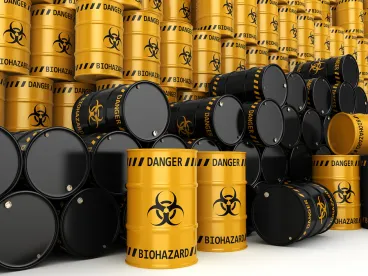Illustrating some limitations on common law claims for groundwater contamination, a federal court in New York partially granted and partially denied a motion to dismiss in a cluster of sixteen lawsuits alleging perfluoroocatanoic acid (PFOA) contamination in a village’s groundwater. Benoit v. Saint-Gobain Performance Plastics Corp., No. 16-cv-930, 2017 WL 3316132 (N.D.N.Y. Aug. 2, 2017). The opinion showed how certain intricate issues such as property ownership and source of water supply can alter the outcome of a tort claim even at the pleading stage. The order was certified for interlocutory appeal to the Second Circuit.
The defendants, Saint-Gobain Performance Plastics Corp. and Honeywell International Inc., owned a facility in Hoosick Falls, New York, that had been using PFOA since the late 1960s. Discharged PFOA migrated into local soil and groundwater. The plaintiffs are local residents. Most used a municipal water supply; some used private wells. Some plaintiffs rented, while others owned their homes. All wells, municipal or private, were later shown by tests to have excessive levels of PFOA. Most, although not all, plaintiffs claimed that they had elevated level of PFOA in blood. Some plaintiffs asserted specific symptoms. The plaintiffs alleged negligence and strict liability, trespass, and nuisance. The defendants moved to dismiss each complaint for failure to state a claim.
The court first addressed the negligence and strict liability claims, which were brought based on alleged property damages and personal injury. The court dismissed the property damage claims from the renter plaintiffs, holding that “a plaintiff cannot recover for damage to property he does not own.” But the court rejected the defendants’ argument that a negligence claim in New York could not be premised on groundwater contamination, citing cases holding the opposite. The court found that the plaintiffs’ alleged reduction in property values, as well as compensatory damages for remediation and restoration, could support property damage claims. Thus the non-renter plaintiffs’ claims survived the motion to dismiss.
The plaintiffs sought medical monitoring as the “central remedy” for the personal injury claims. The court declined to dismiss most of these claims, holding that the alleged accumulation of PFOA in blood was sufficient to permit personal injury claims for medical monitoring. However, two plaintiffs did not claim any elevated blood concentration of PFOA, and the court dismissed their claims with leave to amend. The court further commented that, even if the PFOA accumulation in blood were not a sufficient basis, plaintiffs’ medical monitoring requests could still survive the dismissal challenge, because New York law permits medical monitoring to be consequential damages for “an already existing tort cause of action” concerning property, and the plaintiffs had successfully alleged property torts in this case.
The court dismissed the trespass claims of the plaintiffs who were on the municipal water supply, reasoning that they did not have the “possessory interest” to support trespass claims, unlike those with private wells. Specifically, the court emphasized that New York law did not recognize groundwater contamination alone as an “invasion of property interest,” but soil contamination, which municipal water plaintiffs did not assert in their complaints, would support trespass. The court therefore granted these plaintiffs leave to amend their complaints.
Finally, the court held that the claims could be public – but not private – nuisance. Yet, because public nuisance would only be privately actionable if the plaintiffs suffered “special injury” beyond that suffered by the public, the municipal water plaintiffs’ nuisance claims were dismissed. The private well plaintiffs’ claims survived because the court found the costs of repairing or restoring the private wells were adequately alleged as special losses. The court reasoned that these costs for the private well owners was sufficiently different from the harm suffered by the rest of the area’s population (i.e. municipal water supply users), and that, among private wells, the costs of repair or restoration would vary from case to case, because the alleged levels of contamination were different across properties and the wells on them.



 />i
/>i

